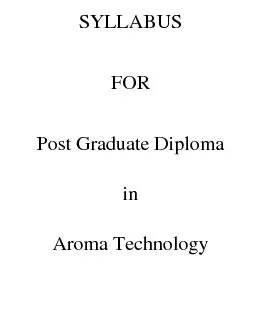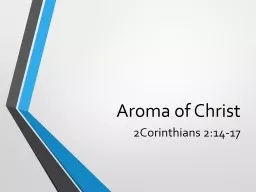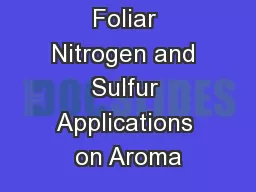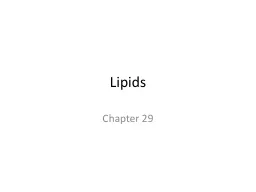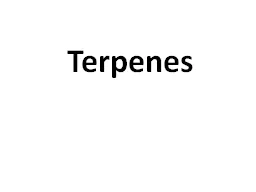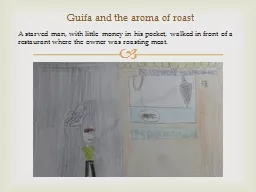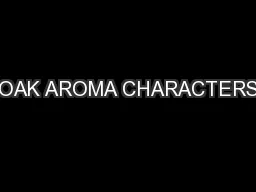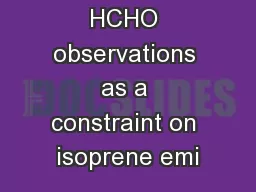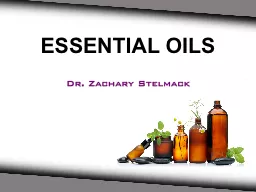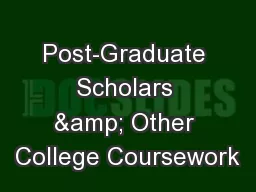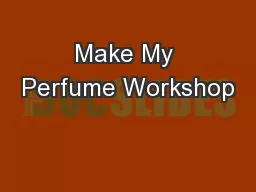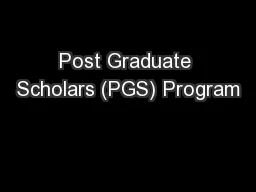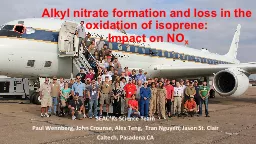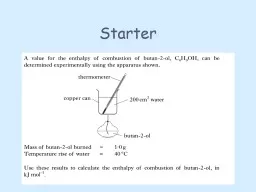PDF-SYLLABUS FOR Post Graduate Diploma in Aroma Technology st Semester Paper Chemistry of
Author : lindy-dunigan | Published Date : 2015-03-18
Paper III Processing of aromatic plants General principles and practices employed in extraction of essential oils Quantitative determination of essential oils Techniques
Presentation Embed Code
Download Presentation
Download Presentation The PPT/PDF document "SYLLABUS FOR Post Graduate Diploma in Ar..." is the property of its rightful owner. Permission is granted to download and print the materials on this website for personal, non-commercial use only, and to display it on your personal computer provided you do not modify the materials and that you retain all copyright notices contained in the materials. By downloading content from our website, you accept the terms of this agreement.
SYLLABUS FOR Post Graduate Diploma in Aroma Technology st Semester Paper Chemistry of: Transcript
Download Rules Of Document
"SYLLABUS FOR Post Graduate Diploma in Aroma Technology st Semester Paper Chemistry of"The content belongs to its owner. You may download and print it for personal use, without modification, and keep all copyright notices. By downloading, you agree to these terms.
Related Documents

